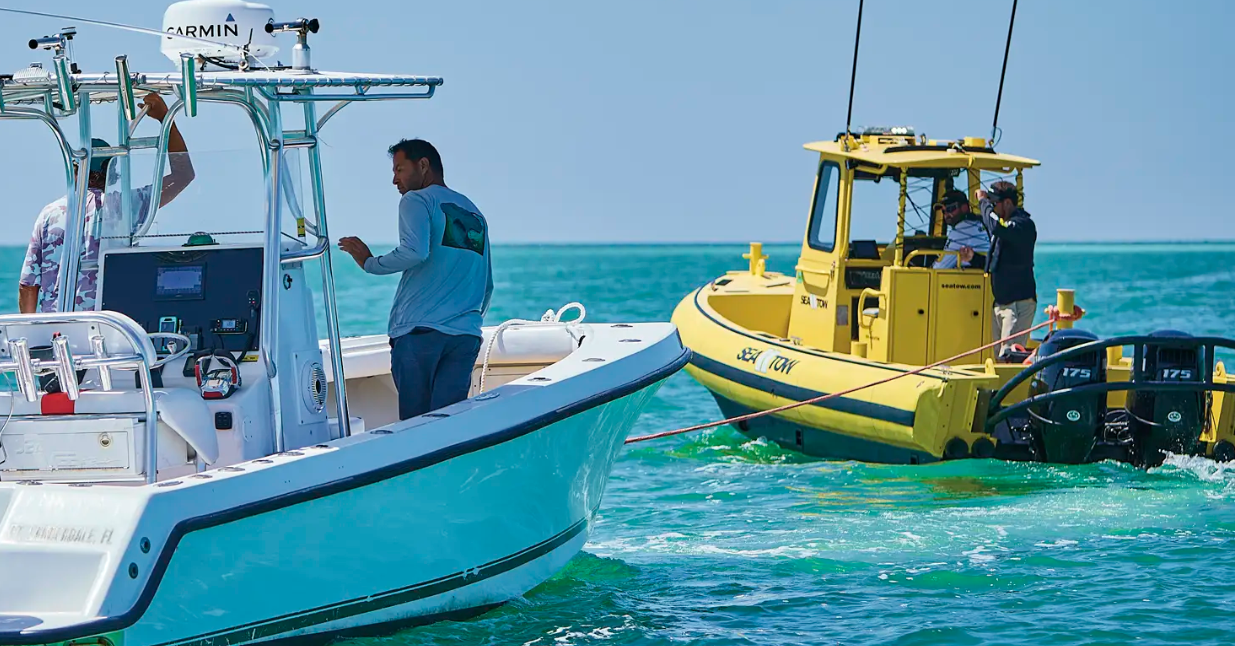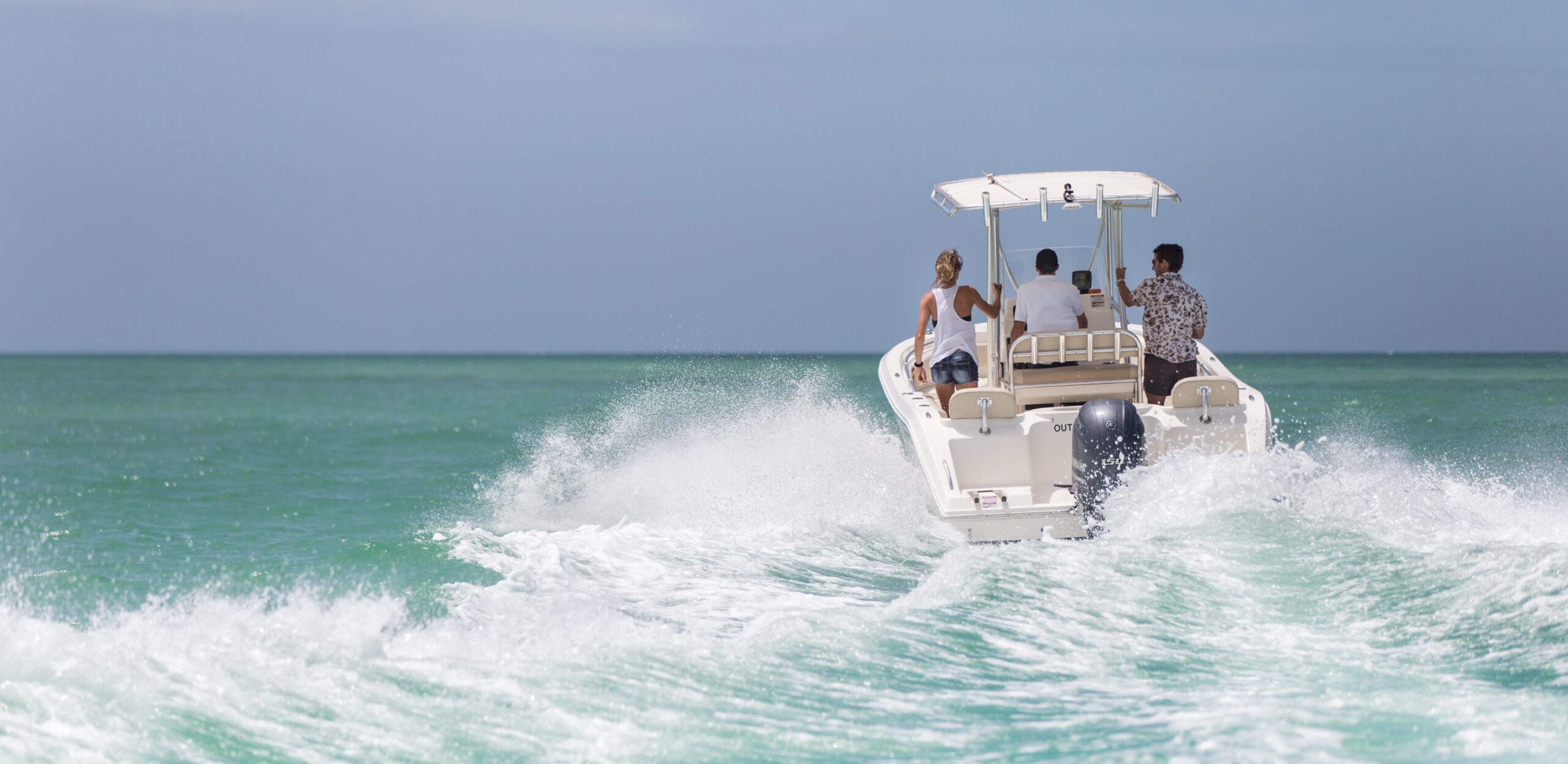It’s been a wild ride for your business these past few years. For a while there, the boat market was incredibly favorable (when you could get boats in inventory), and you were enjoying some healthy profit margins.
But today, it’s time to face the reality of a changing market. If you’re anything like your peers, your dealership has a surplus of model-year 2023 inventory. And 2024 units are headed your way soon. With interest rates climbing, inflation lingering and consumers displaying greater hesitancy about big dollar purchases, it’s crucial for you to adapt your business to this softening market.

It’s time to sharpen your inventory management skills! And to help you do that, we turned to inventory expert David Parker of Parker Business Planning, who has more than 5 decades in the marine industry. In our interview with him, he shared one rule and a few best practices to help you advance your inventory management and give your dealership an edge in this ever-evolving marine business environment.
MRAA: David, we know dealers feel the pressure of moving their 2023 inventory because they have more inventory on hand compared to the last couple of selling seasons, AND the 2024s are on the way. But we’ve heard you mention that moving all of their 2023 non-currents is not necessarily the right mindset, how so?
David Parker: Occasionally, I run into dealers whose philosophy of unit inventory management is to be completely out of stock by the end of July, so they are ready for next year’s model boats to arrive. I believe this philosophy costs these dealers considerable amounts of money because it ignores one of the four types of buyers: the Bargain Buyer.
These buyers are looking for the “bargain boat,” specifically a leftover, non-current model — brand new, with a full warranty, but at a reduced cost. They will typically bypass dealers who don’t have what they are looking for.
MRAA: So is there a good rule of thumb to ensure you turn boats but also retain some of your non-current inventory to satisfy these bargain hunters?
Parker: This is the reason I believe in the 20/10 rule. This means a correct amount of inventory for a dealer is to have no more than 20 percent of their annual purchases of a particular brand or category in stock by the end of July and no more than 10 percent after Labor Day. This allows you to have something to sell to the Bargain Buyers I mentioned. (Please note this rule does not apply to yachts, as stocking levels for this type of boat would be different.)
For example, if you bought 100 boats of a particular brand or category, say pontoons, then a “right-sized” inventory level for this category would be no more than 20 boats remaining by July 31. You then want that reduced to 10 units after Labor Day.
MRAA: While we could probably find a dozen mistakes dealers make in terms of managing their inventory, you said there are some more common missteps with inventory management that deserve a lot of attention within this softening market.
Parker: Of course, we spoke about the misconception of attaining zero status, but pricing is another area where dealers can misstep. Many dealers take a very aggressive approach to getting rid of non-current inventory by pricing their non-currents right up front at cost or near cost amount. The approach of leading with price turns your boat into a commodity where price is the primary point of consideration. This approach also costs the dealer too much money, in my opinion.
Another mistake is not knowing your customers. It is important to recognize each of these types of buyers and to have a strategy to attract and sell to them. There are four primary seasonal types of buyers:
- Bargain Buyers – Again, these customers are looking for “bargain deals” of a brand-new, non-current boat with a full new warranty at a reduced price.
- Early Adopters – These buyers are looking for the latest and greatest and are willing to pay for it. So don’t disappoint them!
- Smart Buyers – These buyers were planning to buy at the boat show or in the springtime but could be sold earlier in the model year, typically the fall through December, if provided good reasons to do so. These reasons include: 1. Better pricing: By avoiding the typical new-year price increase, their trade is one year newer than next spring, so it is worth more now and they can spec out their new boat exactly like they wanted it; 2. Priority delivery dates in the springtime, and a few others. The only caveat is they have to pay for it within 7 days of arrival. It is not uncommon to show savings of $10,000-$20,000 on boats greater than $100,000 in price.
- Impulse buyers – These buyers come out when the weather warms and want to go boating this weekend. They will not wait for an ordered boat; they want it now!
MRAA: You covered the seasons of buyers, but how much of inventory management, whether it’s ordering or clearing out non-currents, is about truly knowing the different types of buyers?
Parker: Within those seasons there are four types of buyers: Cash, Trade, Difference and Payment Buyers. That’s why it’s important to talk in their terms, not yours!
MRAA: Pricing is being discussed heavily these days by dealers, including trade-in value and new boat prices curbing some consumers’ purchasing decisions. How do you combat the high pricing and balance the boating lifestyle in all of this?
Parker: It is extremely important to have a solid pricing philosophy in your dealership. Here is the one I suggest you consider: When the new models come into your dealership, put them in the showroom and put the non-currents in back. Give each prospect the full sales pitch, selling yourself, the dealership, the lifestyle, then the product and lastly the price. Recognize your buyers are buying a lifestyle, not just a boat. That lifestyle includes your dealership’s ability to service them, and how much fun they can have with your boat and events provided.
Hold your pricing up on the new models to about 28-30 percent margins. If the prospect asks for a discount, you can say something to the effect of: “I can’t give a discount on the new model, because they are hard to get, but I can get you a ‘smokin’’ deal on a brand new non-current with a full warranty.” Price the non-current model about 10-12 percent less than the new model.
If further negotiation is needed, do so. Start by giving away additional trade value, if applicable, or providing goods and services such as a credit in your dealership’s store for $1,000+, 2 years of worry-free boating – include annual maintenance and/or winter storage if you’re able, etc.
The key here is, if it is a non-current you need to move, do not let the customer get away. Keep negotiating all the way to your cost, if you must. Remember, you have a depreciating asset that is costing you more and more money in interest and curtailments.
You can even add extra incentives by increasing the commission or adding a flat spiff amount to help get rid of the boat.
MRAA: Why is it important for dealers to attend industry events, join a 20 group and continue to do marketing even in an unsure market? All three seem to be catalysts for staying in tune with local, regional and national perspectives while promoting their brand and continued areas for growth.
Parker: Business is dynamic, meaning it is always changing. The best way to stay abreast of these changes is to join a 20 group and attend industry events such as MRAA’s Dealer Week.
A 20 group is a venue of up to 20 non-competing marine dealers who are committed to helping each other identify issues and find solutions at the same time. It is statistically proven to help the participants increase professionalism and profitability.
Dealer Week is a fantastic event to learn more about running your business and rub shoulders with other industry professionals.
Sound Decision Making & Strength
Improving in these areas will contribute to making your dealership more fundamentally sound in inventory management. Parker has more inventory management tips and best practices you can implement to make your dealership stronger so it can withstand the challenges brought on by an evolving market.
As a highlighted speaker and subject matter expert, Parker will host an educational session about inventory management during MRAA’s Dealer Week 2023 Conference & Expo to be held July 4-7, in Tampa, Fla. Learn more at DealerWeek.com.
In the meantime, check out tips for conducting a mid-season inventory audit as part of MRAA’s Spotlight on Inventory Management).

About the Author: David Parker’s marine career began at 15 when he gained employment with his family’s Parker Boat Company business, a Sea Ray dealership based in Orlando. Over 17 years, he rotated through the ranks from lot boy to rigger, mechanic, parts/service manager, posts in sales and sales management, F&I and eventually accounting. This hands-on experience in virtually all aspects of retail operations provided unique insight that has served him well throughout his stellar 50-year career. He currently facilitates seven marine industry 20 groups and does one-on-one dealership consulting. Visit: www.parkerbusinessplanning.com/




